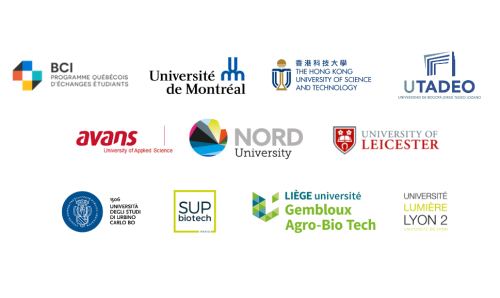Creation of learning community and introduction to students personal involvement in that process.
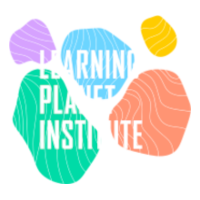
Learning Planet Institute websites
Learning Planet Institute apps
Important information : there will be no new student recruitment for the 2023-2024 year. Thank you for your attention.
FdV Bachelor is a three-year degree, i.e. 6 semesters, which are subdivided into compulsory or optional teaching units (UE), to which European credits (ECTS) correspond. The validation of 180 ECTS is required for the award of the diploma. If the student is successfully involved in a greater number of UEs (options, internships, MOOCs, summer schools) then, at his/her request and on the advice of the pedagogical commission, he/she will be entitled to a supplement to the diploma.
FdV Bachelor program presentation (in French), thanks to Ilona from Oxygen year !

Creation of learning community and introduction to students personal involvement in that process.
L’objectif de ce cours est de vous familiariser à l’informatique et à la programmation. Cette initiation se fera par la pratique de la programmation dans le langage généraliste Python. Nous aborderons des notions théoriques simples qui amélioreront votre compréhension de l’informatique.
Le but final des 4 UEs de biologie de L1 et L2 est pour chaque étudiant de pouvoir aborder le vivant à toutes les échelles, et de savoir étendre et réactualiser ses connaissances de manière critique. Dans ce cadre, l’UE de Biologie L1S1 se concentre sur les niveaux moléculaires (ADN, ARN, protéines, liaisons faibles, etc) et cellulaires (structure, métabolisme, etc).
Les biomolécules (oligosaccharides, protéines, ADN) sont impliquées dans de nombreux processus biologiques fondamentaux. Savoir analyser à l’échelle atomique leur structure et leur état de protonation est essentiel à la compréhension de leur fonction. L’objectif de cette UE est donc d’étudier l’atomistique et les transferts de protons à l’échelle de petites molécules pour commencer, avant d’aborder la complexité des biomolécules.
Le cours introduit les notions de raisonnement formel en s’appuyant sur la logique propositionnelle. Il permet aussi de renforcer les notions vues dans le secondaire, notamment sur les ensembles de nombres et l’analyse de fonctions réelles. Le cours se concentrera dans sa deuxième partie sur la notion de différentielle et ses applications (développements de Taylor et développements limités). La fin du cours abordera les fonctions de plusieurs variables et la notion de dérivée partielle.
A partir d’expériences clés DIY hors labo avec les Smartphones et les Movuino du CRI, apprendre à manipuler les concepts fondamentaux de la physique de Newton et à travers des projets en petit groupe, travailler sur des questions ouvertes et complexes: les 17 objectifs du développement durable de l'ONU.
L'objectif de cette UE est d'amorcer avec les étudiants une réflexion sur leurs perspectives professionnelles, et ainsi de les préparer à la recherche de leur 1er stage au 2e semestre.
A travers des lectures de textes, d’analyse de débats/controverses, de mises en débat et d’une sortie ethnographique, il s’agira de proposer aux étudiant.e.s une diversité de regards sur l’activité scientifique, qui est mise au centre de nos réflexions. Nous chercherons également à voir comment l’activité scientifique est questionnée ou bien encore comment elle permet un questionnement au-delà du champ académique.
Communicating science in English to both scientific and lay audiences
Participation in a scientific debate for a lay audience Critical reading of scientific papers Cover letter for submission of a research article to a journal Presentation of a research article to a scientific audience Skills for scientific interviews
Dans le cours de thermodynamique, le système préféré est le gaz parfait. On décrit son état thermodynamique (à l’équilibre) et comment on passe d’état d’équilibre en état d’équilibre au cours de transformations réversibles pendant lesquelles il échange chaleur et travail avec le monde extérieur.
L’état du gaz parfait est défini par ses variables thermodynamiques: P, V et T. Aujourd’hui, et seulement depuis quelques années, les microcapteurs des Smartphones permettent de mesurer P et T avec une grande sensibilité partout et en fonction du temps. On contrôle V en manipulant. On peut donc facilement faire de la thermodynamique expérimentale. C’est nouveau. Profitons en! Les MOVUINO du CRI rassemblent sur une plaquette baromètre, thermomètre, WIFI, batterie et mémoire. Code sous processing fourni pour l’essentiel! Merci Kevin! Let’s go!
Analysis of student learning experiences for a smooth transition in 2nd semester, especially addressing the specificity of interdisciplinary training.
Anticipate second year of studies and L3 by analysing acquired skill-sets and by strengthening personal and group learning attitudes.
Toujours par la pratique, l’objectif de ce cours est d’approfondir les aspects et notions découverts au premier semestre en Python. Nous consoliderons les techniques de traitement de chaînes de caractères, qui nous aideront dans l’analyse de problèmes de biologie simples. Nous tenterons pour cela d’acquérir les réflexes algorithmiques élémentaires. Nous nous familiarisons également à l’utilisation de librairies externes en Python.
Cette U.E. aborde les bases essentielles à la compréhension des connaissances actuelles en biologie. Des concepts clés et des thèmes fondamentaux du monde du vivant sont abordés à l’échelle cellulaire et moléculaire.
Bases fondamentales théoriques : cycle cellulaire, méiose, génétique classique, expression génique (transcription et traduction), biotechnologies et méthodologies (techniques).
Méthode d’apprentissage basée sur la pédagogie inversée (e-learning).
La biosynthèse mais aussi la métabolisation des molécules et des biomolécules sont des transformations chimiques indispensables à la survie des organismes.
Savoir doser la présence de certaines molécules par RMN et proposer une explication rationelle pour justifier leur formation sont des étapes essentielles la compréhension des processus biochimiques.
L’objectif de cette UE est donc d’étudier les principaux mécanismes en chimie organique ainsi que l’élucidation de structure par RMN.
Le cours introduit les notions d’espaces vectoriels, d’applications linéaires et montre le lien avec les notions de vecteur et matrice vues dans le secondaire (module d’algèbre linéaire). Il permet aussi de renforcer les notions vues dans le secondaire, notamment sur les primitives et les intégrales et apprend à résoudre une équation différentielle simple, c’est à dire à coefficient constant du premier ordre (module d’analyse).
Cette UE consiste à situer une question de recherche en sciences du vivant, c'est-à-dire à analyser comment la recherche est faite aujourd'hui sur ce sujet, non seulement en termes de méthodes et pratiques de recherche, mais également en termes d'enjeux, d'acteurs et de cadres institutionnel, politique, culturel, social, financier, déontologique, etc.
Ce cours est divisé en deux temps qui sont autant de regards différents sur les sciences et leur rapport avec les sociétés.
Dans un premier temps (séance 1 à 5), le cours propose un prolongement du cours Méthodologies scientifiques dispensé au 1er semestre. Il approfondit les principales théories des STS, en les articulant autour de la question des crises environnementales. A travers des lectures de textes et de la vision de vidéos de diverse nature, il s’agira de proposer aux étudiant.e.s une diversité de regards sur l’activité technoscientifique. Des exercices d’analyse et de synthèse seront demandés et restitués sous des formes diverses (débats, résumés de séances, présentations et travail par groupe).
Dans un second temps (séances 6 à 9) il sera proposé un retour sur l’histoire des sciences et la construction de la pensée scientifique. Cette proposition nous conduira à nous poser au fil du cours un ensemble de questions quant à la situation que nous vivons actuellement non seulement en termes de sciences, de technologies mais aussi de rapports sciences et société.
Stage court généralement d’observation. Des expériences peuvent être confiées aux étudiants mais il s’agit d’expériences ponctuelles, plus proches d’une séance de travaux pratiques.
Les stages peuvent se dérouler dans des laboratoires exerçant leurs activités dans des domaines en lien avec les enseignements dispensés dans la licence. Ce stage leur permet alors d’approfondir et de mettre en pratique les enseignements concernés. Les étudiants doivent être acteurs de ce stage dans la recherche d’un lieu de stage.
In Year 1, a multidisciplinary common core is an important part of the curriculum, so that all students acquire the same base of knowledge.
Courses are taught in French. Foreign students with a minimum B2 level of French are welcome to join the program.
WARNING: From the beginning of the 2022-2023 academic year, the Bachelor program will only accept students at the L2 and L3 levels. No admission at the L1 level.

This course aims at giving an overview of modelling approaches in the broad context of life science (population growth, pharmaco-kinetics, prey-predator systems). We will use a visual, applied and interdisciplinary methodology centered on mathematics and biology.
Life sciences requires a good understanding of tools and models to observe, acquire data, predict, analyze or interact with biological objects.
Electronics brings a more engineering approach present in sensors or in the understanding of systems biology.
Enzymes are an essential part of life, since they catalyze all fundamental transformations in living organisms.
Therefore, knowing how to produce, purify, analyze them, and how to test their kinetic properties are key steps for the in vitro characterization of biochemical processes.
The aim of this teaching unit is to study basic biochemical methods as well as enzymatic kinetics.
The global aim of biology courses in L1 and L2 is for each student to be able to approach living organisms at all scales, and to be able to actualize its knowledge in a critical manner. In that framework, Biology focuses on microorganisms, and evolution.
Here, by Computational Science we mean the art of doing quantitative science with computers. This potentially applies to all fields: Biology, Bioinformatics, Physics, Chemistry, and more. The goal is to get familiar with computer modeling as a tool to solve scientific problems, either using specialized software, or programming our own software tools.
Students will choose to follow an extra-curricular course or activity. Choices can be made between: a module on evolutionary medicine (30H, cf specific syllabus), Harvard Summer School, CRI labs Summer School, studying a MOOC (60h in all), volunteering in an association (30h), commit to a student club...
Its purpose is to enable the student to develop his skills in the field chosen and to broaden his professional prospects.
Students prototype ways to observe and/or protect biodiversity. Through a literature review and a questioning of the possibilities and limitations of DIY methods, they design, build, test prototypes for participatory research. The cohort of 40 students join and contribute to a scientific movement of citizens of the sea, yachtsmen, fishermen, islanders... who want to contribute to the observation and preservation of biodiversity throughout the world, in fruitful interaction with researchers, politicians, associations and companies.
The purpose of this lecture is to "revisit" theory and through practices the various learning processes they have been able to experience and be familiarized with, but using innovating, restructured and opened approaches on new learning protocols.
We are the product of 3.8 billion years of natural selection, and yet we still get sick! We are sensitive to pathogens, to organism dysfunctioning, and we are not perfectly adapted to the environments we live in. Why is that so? During the last 20 years, evolutionary biologists and physicians have tackled this issue, by investigating not only diseases during the patients’ lifetimes, but also the evolutionary origins of our deepest vulnerabilities. At the interplay of evolutionary biology, of health biology and medecine, evolutionary medecine tries to reconcile the medical necessity of short-term solutions with long-term dynamics of evolution, in order to propose new prospects on healthcare… some of which have already resulted in new therapeutic strategies!
CRI research and Licence Frontières du Vivant (LFDV, Frontiers in Lifesciences) are teaming up to co-create a research course for 2nd year (L2) students called SCORE: Student COllaborative REsearch. This is an exciting opportunity to connect education and research at CRI in a meaningful way, involve students in research and open the projects to a broader audience.
Prepare and decide upon attitude to build interactions within future learning environment by analysing proficiency to rely on personal autonomous learning capacity.
Finalize preparation for building interactions with new surroundings which includes new students, colleagues, teachers and researchers in the upcoming future abroad.
Through concrete examples, students will be able, at the end of the semester, to perform the most common statistical tests using statistical analysis software (R), discuss and even criticize their uses in scientific articles.
This course deals with electrostatics, a fundamental type of physical interaction relevant for many biological functions involving charged species (DNA, proteins, ...), as well as with motion of charged species under the effect of an electric field, a phenomenon causing for example electrical signals in neurons.
Every biochemical reaction involves structural changes, which can be a mere conformational change, or more important chemical transformations. Therefore, knowing how to detect and quantify these changes using spectroscopic or thermochemical (ITC) methods is essential for the in vitro and in vivo characterization of biochemical processes. The aim of this teaching unit is to study thermochemistry and different spectroscopic techniques with the use of examples and applications from the chemistry of life. This teaching unit will present instrumental techniques used for the analysis, characterization and identification of (bio)molecules.
The main subject of the semester is physiology. In agreement with the objective to acquire transversals skills (learning to learn) a flipped classroom setting is used, in which the students first write the chapters contents.
This class is an introduction to mathematical models in biology. More specifically, we will insist on the two main categories of mathematical executable (i.e., computational) models in (mainly molecular) biology: deterministic and stochastic.
Technical part of the class aims at training students on the use digital fabrication tools (3d printers , laser cutters) , electronic prototyping platforms (arduino ) and basic computer aided software (fusion 360). The goal is that, at the end of the course, every student is able to make by himself a simple measurement device (arduino + sensor and box) , is able to explain how it works and to understand the limitations of the system. The second goal is to give to students the engineering methodology of finding a problem, designing the right solution under some constraints, managing a planning and milestones and evaluating the final result. A substantial part of the module is reserved for a team project that has to be related to UN SDG's (Sustainable development goals) in order to sensitize students on sustainable development.
This course aims to develop reflexivity about how data are produced, analysed, shared, stored, in a research project. Students work in groups of 3-4, on a dataset proposed by researchers. The course focuses on reliability and reproducibility issues currently faced by the scientific community, analysing underlying practices, guiding the students to develop reliable research practices.
This course aims at giving the fundamental basis of life science modeling for biologists, using a project-based approach to dynamical systems.
This course is centered around a 4 to 8 weeks internship where the student will developed a short term project (non only observational) with clear objectives within the academic or private institution of thier choice (laboratory, foundation or association for exemple).
Interships can be performed in laboratories with activities related to the courses taught in the bachelor. This internship will allow them to deepen and put into practice the coresponding skills and knowledges. Students must be highly involved in this internship both by the search of the place of training and in the realization and analysis of the experiments. This is not an observation internship. Moreover, students will write a written report on their activity and an oral presentation of their work.
This collaborative course proposes the students to achieve experiments to answer scientific questions : which is the more relevant formulation of an antibiotic able to kill yeasts at low concentration and to have low toxicity against mammalian cells ? is there any physico-chemical characteristics able to explain the results?
All students will be required to work in collaboration with 3 other students in a group. Each group has to prepare, characterize and evaluate the antifungal activity and the toxicity of one formulation.
In L2, the courses become interdisciplinary, combining the acquisitions of the different subjects in the first year, especially during the more numerous projects. Students also have the opportunity to complete a 4 to 8 week internship.
Courses are taught in English or French, with all course materials in English. Foreign students with a minimum B2 level of French are welcome.
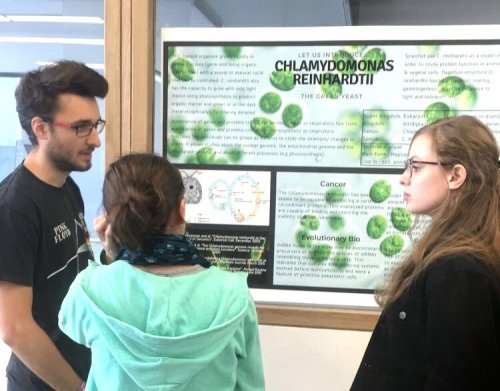
This course aims at giving an overview of available methods in data analysis, using actual concrete datasets (mainly images) to solve a large variety of problems.
The systems ecology module explores the interdisciplinary fields of ecology and evolution using an approach that focuses on how mathematical and computer models can serve as tools to integrate knowledge and generate hypotheses.
This course aims at showing how biophysical approaches allow quantitative studies of cell physics that help understanding cellular functions.
This course aims at showing how biochemical and analytical methods (and also combinations of them) allow to study (= to identify, characterize and quantify) biomolecules.
During this class students will learn about the methods used in experimental evolution and ecology and the related scientific questions. Through a team project and using makerlab’s tools, students will be able to design and implement a machine to measure data and modify parameters of the culture. This constrained ecosystem will be a good way to gather data and analyze it through modeling. Results will be presented in the form of an research article + a presentation.
During this class you will design, execute and interpret experiments. You will have to design your own experiment, with one important constraint: it must include a quantitative method and the quantification must be the basis on which you will build the answer to your question. You will choose a toolbox containing a model organism or a biophysical technique to design your experiment.
Development of communication strategies on research practice, methodology and scientific concepts to extract key points of their messages to variety of audiences.
This introductory module to quantitative neurobiology is articulated in a first week of theoretical and fundamental learning; the second week will be dedicated to hands-on learning. Two optional modules will be proposed for this second week: practical work or the deepening of a personal research project(s).
Citizen science is often promoted as a way to perform responsible and socially relevant scientific research. Based on concrete examples of action in which the trainers are involved, we will question the challenges of sincere collaboration with citizens. We will present how such collaborations question current knowledge production within scientific institutions. This requires us to reflect on the norms and values of scientific research, making use of the work done in the field of science studies, in particular epistemology, and history and sociology of science.
Students can choose to follow an extra-curricular course or activity. Choices can be made between: studying a MOOC, volunteering in an association, commit to a student club, French course for non-French speakers...
Its purpose is to enable the student to develop his skills in the field chosen and to broaden his professional prospects.
Starting in L2, the student reflects on his or her pursuit of studies in L3, along with the FdV coordination team. This choice may involve deepening one of the disciplines studied during the two first years or, on the contrary, continuing on the path of interdisciplinarity. Upon decision of the L3 committee, the student will be allowed to apply for an exchange semester in a partner institution. Grades and credits awarded by the host institution are obtained by equivalence.
...........
See list of partnerships below.
The internship allows students to discover different professional backgrounds, to test several possible orientations, and to refine their professional project in full knowledge of the facts. They are accompanied by the teaching team in defining the internship and for administrative procedures, but are encouraged to find their internships by themselves or via the alumni network.
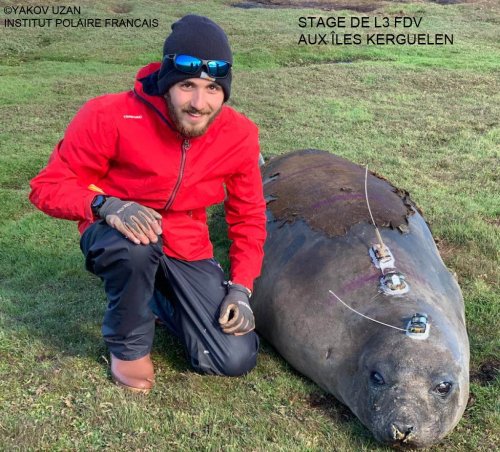
During this semester, students will tackle concrete issues related to the SDGs, which will be proposed by professional mentors from the socio-economic or associative field. Engaging themselves as apprentice researchers, students will work as a team to design a sustainable and eco-compatible solution which will take the form of a interdisciplinary research project.
This training will be punctuated by a dozen workshops allowing each participant to become familiar on the one hand with the SDGs and on the other hand with the multiple facets of scientific methodology. The smooth running of the semester will be ensured by researcher-tutors who will guide the student teams through each stage of the development of their project, from the idea to the proof of concept.
Each week, collective workshops will allow the different teams to progress together thanks to the stimulation of collective intelligence and the implementation of peer assessment. The final evaluation is based on the rendering of a report accompanied by an oral defense, which will be both examined by a jury of professionals.
This course aims at giving an overview of available methods in data analysis, using actual concrete datasets (mainly images) to solve a large variety of problems.
The systems ecology module explores the interdisciplinary fields of ecology and evolution using an approach that focuses on how mathematical and computer models can serve as tools to integrate knowledge and generate hypotheses.
This course aims at showing how biophysical approaches allow quantitative studies of cell physics that help understanding cellular functions.
This course aims at showing how biochemical and analytical methods (and also combinations of them) allow to study (= to identify, characterize and quantify) biomolecules.
During this class students will learn about the methods used in experimental evolution and ecology and the related scientific questions. Through a team project and using makerlab’s tools, students will be able to design and implement a machine to measure data and modify parameters of the culture. This constrained ecosystem will be a good way to gather data and analyze it through modeling. Results will be presented in the form of an research article + a presentation.
During this class you will design, execute and interpret experiments. You will have to design your own experiment, with one important constraint: it must include a quantitative method and the quantification must be the basis on which you will build the answer to your question. You will choose a toolbox containing a model organism or a biophysical technique to design your experiment.
Development of communication strategies on research practice, methodology and scientific concepts to extract key points of their messages to variety of audiences.
This introductory module to quantitative neurobiology is articulated in a first week of theoretical and fundamental learning; the second week will be dedicated to hands-on learning. Two optional modules will be proposed for this second week: practical work or the deepening of a personal research project(s).
Citizen science is often promoted as a way to perform responsible and socially relevant scientific research. Based on concrete examples of action in which the trainers are involved, we will question the challenges of sincere collaboration with citizens. We will present how such collaborations question current knowledge production within scientific institutions. This requires us to reflect on the norms and values of scientific research, making use of the work done in the field of science studies, in particular epistemology, and history and sociology of science.
Students can choose to follow an extra-curricular course or activity. Choices can be made between: studying a MOOC, volunteering in an association, commit to a student club, French course for non-French speakers...
Its purpose is to enable the student to develop his skills in the field chosen and to broaden his professional prospects.
This semester offers a unique opportunity to incoming and exchange students to study in an interdisciplinary research-oriented environment in the field of Quantitative Biology. It is about understanding complex biological behaviors using physical and mathematical models.Through lectures, projects with researchers and teamwork, students develop their creativity, theoritical knowledge and personal skills.
Description of the semester:
Timeline of the semester

List of workshops / courses occuring during the semester
Step 1: Definition of the problem to be addressed Ikigai Introduction to SDGs Workshops to put into perspective the challenges of sustainable development Bibliographic research workshops Collective intelligence Interactive conference on sustainable development
Step 2: Definition of the project to achieve Design thinking Open-science and Citizen science Critical mind Scientific project management Scientific methodology workshops Interactive conference on sustainable development
Step 3: Implementation Laboratory tools and methods Tools and methods of a makerlab Reflection and resilience workshops Critical analysis of the results Interactive conference on sustainable development
Step 4: Outlook and evaluation Scientific communication (written and oral) Scientific and commercial perspective Interactive conference on sustainable development
Quantitative Biology @CRI
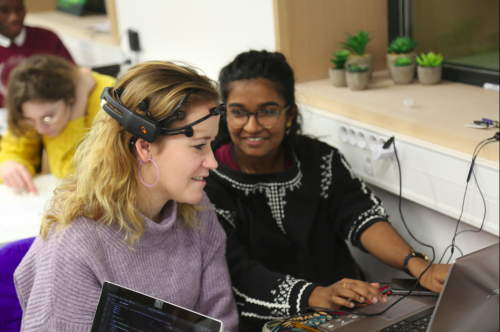
Bishop’s University
Université Laval
Université de Sherbrooke
Université du Québec à Montréal (UQAM)
Université du Québec à Trois-Rivières (UQTR)
Université du Québec à Rimouski (UQAR)
Université du Québec en Outaouais (UQO)
Université du Québec en Abitibi-Témiscamingue (UQAT)
École de technologie supérieure (ETS)
